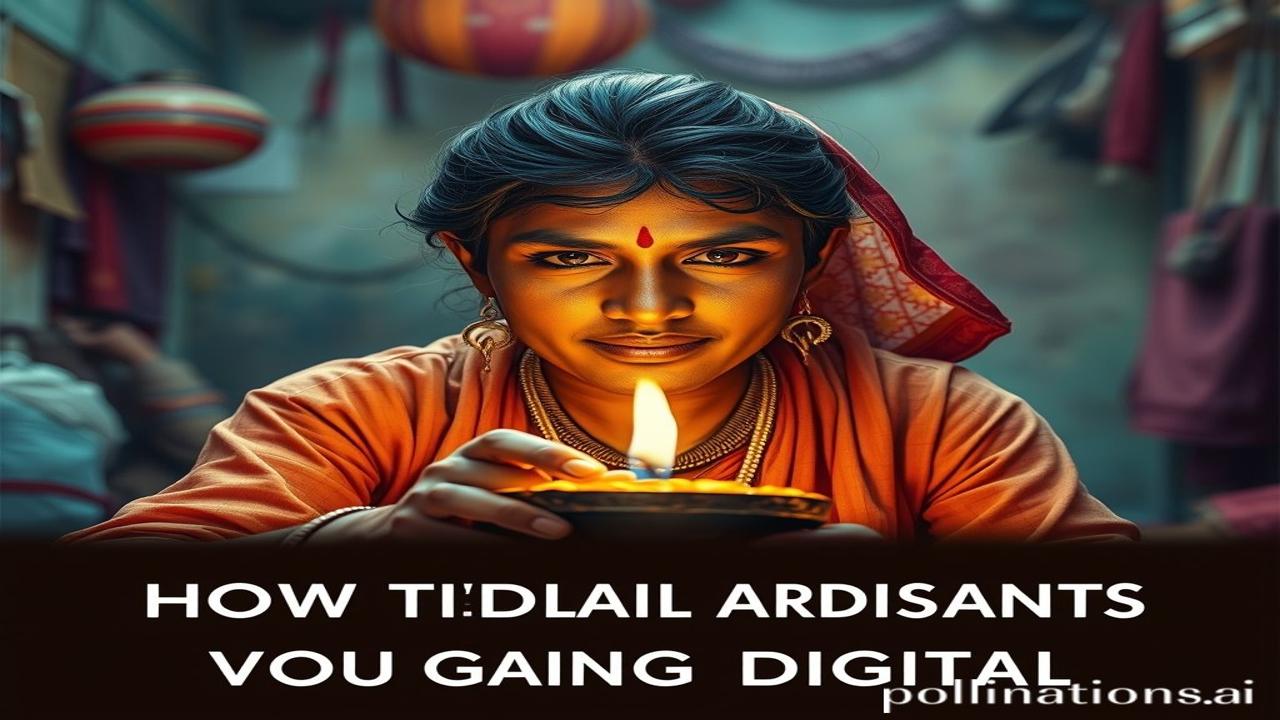Waqt Ki Karvat: Kaise Traditional Artisans Ja Rahe Hain Digital
Kabhi socha hai, ki woh mitti ki khushboo jo hamari dadi ke haathon se bani matkiyon mein hoti thi, woh aaj bhi zinda hai? Lekin, kya woh charkhe ki aawaaz, ya lohar ki dhankan digital duniya mein bhi sunai degi? Waqt badal raha hai. Traditional artisans, jo sadiyon se apni kala se Hindustan ko sajaate aaye hain, ab ek naye mod par khade hain. They’re going digital.
What is the ‘Digital Transformation’ of Traditional Arts?
Ye ek aisa safar hai jahan kala aur technology ek dusre se mil rahe hain. It’s not just about selling bandhani sarees online or posting pictures of Madhubani paintings on Instagram. It’s about completely changing the way artisans design, create, sell, and even learn their craft. Imagine a potter using 3D printing to create complex designs, or a weaver using AI to analyze market trends and create designs that are in high demand.
This movement isn’t just trendy; it’s vital. Kyunki, agar humne apne kala aur karigari ko nahi bachaya, toh ek din woh sirf kitabon aur museums mein hi dikhai degi.
A Brief Historical Context
India ka itihas art and craft se bhara hua hai. From the ancient Indus Valley Civilization ke pottery to the Mughal era ke intricate zari work, kala hamesha se hamari pehchaan rahi hai. These skills were passed down through generations, families, and guru-shishya parampara. Each region developed its own unique style, reflecting its culture, geography, and beliefs.
But, badalte waqt ke saath, these traditional crafts faced numerous challenges: competition from mass-produced goods, lack of access to markets, and a decline in demand. Globalization ne sone ki chidiya ko kahi na kahi kamzor kar diya.
Zameeni Sach: Logon Ki Zindagi
Imagine a potter, Ramlal, in a small village in Rajasthan. For generations, his family has been making beautiful terracotta pots and selling them at local fairs. Subah se shaam tak, he toils in his workshop, his hands covered in mitti, his heart filled with kala.
“Beta, yeh humari parampara hai. Isko zinda rakhna hai,” his father used to say.
But Ramlal is struggling. Mehangai badh rahi hai, and the demand for his pots is decreasing. People are buying cheap plastic alternatives. He worries about his family’s future and the future of his kala.
Now, imagine Ramlal learning to use a smartphone. He discovers online marketplaces and social media. He starts posting pictures of his pots, telling stories about his craft, and connecting with customers from all over the world.
“Namaste! Main Ramlal hoon, Rajasthan se. Yeh mere haathon se bani mitti ki matki hai. Har ek mein, main apna pyaar aur kala daalta hoon…”
He’s learning to use digital tools to reach a wider audience, manage his inventory, and even design new products based on customer feedback. This is the power of the digital transformation.
Dharohar aur Pehchaan: The Resonance Today
Aaj, we see the echoes of this digital transformation everywhere. Websites dedicated to handcrafted goods are booming. Instagram is filled with artisans showcasing their work. Government initiatives are helping artisans access digital tools and training.
This is not just about economic empowerment; it’s about preserving our sanskriti and dharohar. It’s about ensuring that the skills and knowledge passed down through generations continue to thrive in the modern world. It connects us to our Bharatiyata and reinforces our unique identity on the global stage.
Fun Fact or Myth-Buster
Myth: Traditional arts are incompatible with modern technology.
Truth: Technology can actually enhance traditional arts. For example, AI can analyze ancient weaving patterns and help artisans recreate them accurately. 3D printing can be used to create intricate designs that were previously impossible to make by hand. The key is to use technology as a tool to support and amplify, not replace, traditional skills.
Drishya aur Bhavnayen: A Sensory Tapestry
Imagine the air filled with the scent of sandalwood and mitti. Feel the warmth of the sun on your skin as you watch Ramlal at his potter’s wheel. Hear the rhythmic sound of the charkha as a weaver creates a beautiful pashmina shawl.
Dekho, rangoli ke rang jo zameen par bikhar gaye hain, har ek mein ek kahani hai. Suno, mandir ki ghantiyon ki aawaaz, reminding us of the parampara that binds us together.
These are the bhavnayen that we must preserve and celebrate as our artisans embrace the digital world.
Antim Vichar Ya Uddharan:
“Kala anant hai, aur uske rang har yug mein badalte hain. Digital yug mein, humein un rangon ko apnana hai, lekin apni jadd se jude rehna hai.”
This digital transformation is not just a trend; it’s a necessity. Let us support our artisans, celebrate their kala, and ensure that their stories continue to be told for generations to come. Because in preserving their art, we are preserving our atma.
